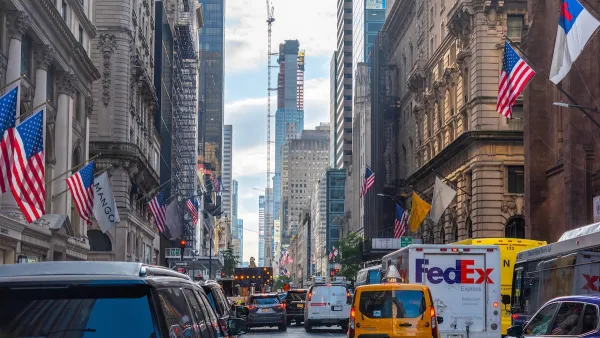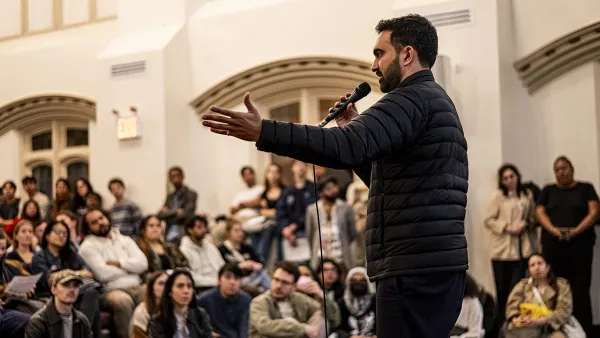In a step toward accomplishing PlaNYC's goal of reducing the city's carbon emissions by 30% in the next twenty years, Mayor Bloomberg has announced that larger buildings will be retrofitted to be more energy efficient.
"One group that is apprehensive about the program is the city's developers and building owners. 'My members all want to make sure we have a green city and green buildings,' Stephen Spinola, president of the Real Estate Board of New York, said in a telephone interview after the event. 'But the thing is, we don't want to be stuck with something that doesn't work.' Spinola said that he had been working with the mayor on the program for the last year, and hoped that any major differences could be ironed out.
Acknowledging the difficulties of the current economic climate, the administration has set aside $16 million of stimulus funding to be used in a revolving loan program to help finance the required energy improvements. This, along with the other five pieces of the program, would go into effect between 2010 and 2013, though the mayor emphasized that the program 'pays for itself' and hoped building owners would begin immediately.
Carl Pope, president of the Sierra Club, said he wished his home state of California had come up with the plan, though he admitted the program would probably make its way out there through the city's example. 'New York City will create the marketplace for energy-efficient technology for the next 50 years in this one single act,' Pope said. 'I don't think we appreciate how drastically this will change the way Americans use energy.'"
FULL STORY: Greening the Skyline

Maui's Vacation Rental Debate Turns Ugly
Verbal attacks, misinformation campaigns and fistfights plague a high-stakes debate to convert thousands of vacation rentals into long-term housing.

Planetizen Federal Action Tracker
A weekly monitor of how Trump’s orders and actions are impacting planners and planning in America.

In Urban Planning, AI Prompting Could be the New Design Thinking
Creativity has long been key to great urban design. What if we see AI as our new creative partner?

King County Supportive Housing Program Offers Hope for Unhoused Residents
The county is taking a ‘Housing First’ approach that prioritizes getting people into housing, then offering wraparound supportive services.

Researchers Use AI to Get Clearer Picture of US Housing
Analysts are using artificial intelligence to supercharge their research by allowing them to comb through data faster. Though these AI tools can be error prone, they save time and housing researchers are optimistic about the future.

Making Shared Micromobility More Inclusive
Cities and shared mobility system operators can do more to include people with disabilities in planning and operations, per a new report.
Urban Design for Planners 1: Software Tools
This six-course series explores essential urban design concepts using open source software and equips planners with the tools they need to participate fully in the urban design process.
Planning for Universal Design
Learn the tools for implementing Universal Design in planning regulations.
planning NEXT
Appalachian Highlands Housing Partners
Mpact (founded as Rail~Volution)
City of Camden Redevelopment Agency
City of Astoria
City of Portland
City of Laramie





























